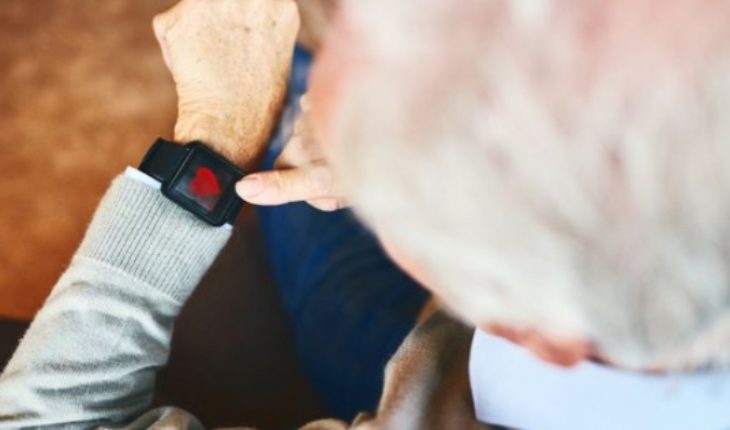Advances in science serve to extend our life expectancy. But technology may also deprive us of the signals our own bodies give us, clues our ancestors had to detect changes and health problems.
The Internet offers “recipes” to identify some of these signals with simple, individual and home tests. After contrasting with doctors, here are eight that can be helpful in following your own health trail, as these professionals said.
Remember that you must go to a professional to have an accurate diagnosis, since the generalization and simplicity of these tests can result in false positives or negatives.
A sheet of paper, a pen and a simple drawing can give the alarm voice about important changes in cognitive ability.
This test is part of some of the assessments performed by neurologists: preferably accompanied, the person examined should draw a clock on a sheet of paper. First the circle, then the numbers in the correct order, and finally the needles. Neurologist Fabio Porto of the Hospital das Clínicas de Sao Paulo recommends drawing it at 2:45 or 11:10.
There are different studies and versions around the world on how the results should be measured, but in general, an “abnormal” clock should draw attention when it appears, for example, with repeated numbers; misplaced needles; or a different time than the request.
Delay, difficulties in understanding instruction or execution may indicate changes in memory and cognitive ability, especially in old age, when these changes manifest more and may be symptoms of Alzheimer’s and dementia.
“It’s a test that involves visual functions and also frontal lobe functions (a part of the brain), such as planning, logical reasoning and abstraction,” explains Porto.
Do cold showers really have health benefits?
“Initially, the ideal is that the drawing is spontaneous. If one person fails, another may ask them to copy one already done.”
Other small and easy tasks that can manifest large deviations are, as the neurologist recommends, name the months of the year backwards or pronounce in one minute approximately 11 words with the same initial letter (example: FOrQ) or objects of the same category (such as animals or cooking utensils).
“However, it is important to remember that these tests can lead to results influenced by other factors, such as inattention, anxiety, depression, education and a lack of understanding of the statement,” he says.
Developed by two Brazilian researchers, the Sit and Stop Test has spread around the world as a simple tool to evaluate the combination of four components of a person’s health: weight, flexibility, balance and muscle power.
The test should be done with comfortable clothing, bare feet, on a flat surface and preferably with company, especially when the person doing it has special conditions, such as pregnant and elderly.
Basically, the proposal is that, in the position of the one who is going to sit (with the feet crossed), the person sits and stops without supporting any part of his body other than the sole of his feet. It doesn’t matter the speed.
From a total score of 10, considering the two steps (sitting and standing), a point is lost for each part of the body that touches the floor, such as a hand, forearm, knee, or side of the leg. A point is also lost if you rest a hand on your knee or thigh.
If you stumble, 0.5 points are subtracted.
Example: if a person loses the balance by dropping (-0.5 points) and when he gets up, he loses it again (-0.5 points) and using a hand as an impulse (-1), his score would be 8.
The ideal score is between 8 and 10 points, but varies by gender and age.
“It is very rare for people over 65 to get the full score,” says Claudio Gil Araújo, method author and postdoctoral fellow in Exercise Medicine.
By monitoring the health history of 2,000 people over the years, Brazilian researchers realized that good scores were powerful tools for predicting quality and life expectancy.
People who were less than 6 and 7.5 points recorded twice the chance of dying in the next six years as those above this threshold; among those with 3 points or less, the chance of dying in that period was five times more.
According to this doctor, each component present in the test is related to health problems: in the scientific literature, overweight is associated with certain types of cancer, strokes and heart attacks. Lack of balance, flexibility and muscle power can cause fractures and falls.
“It’s not a direct relationship, but the factors measured in the test show a predisposition to some health problems.”
The good news is that those with relatively low scores can try to improve their grades and therefore their health. For example, with physical exercises. Therefore, the test can be done and recorded successively, creating a history.
This test even has a name in the medical literature: The Godet signal, which involves using the thumb or two fingers together and pressing between 5 and 10 seconds the skin of the leg in the region between the knee and ankle , or the instep.
If the footprint leaves the skin “sunk” after a few seconds, this may be a sign of fluid retention, a problem with circulation. The healthy thing is that the skin returns to normal almost immediately.
Fluid retention can be the result of everyday situations, such as standing for a long time, the use of hormone treatments such as contraceptives; or even more serious health conditions, such as heart failure and cirrhosis.
Circulation (blood and other fluids through the veins, arteries, and lymph vessels) can also be evaluated using your fingers to press on the fingernail until it turns light in color.
When you release it, if the color under your nail takes more than about 2 seconds to return to what it was, it may be a sign of some abnormality.
“People with peripheral vascular diseases have this slightly slower mechanism,” says cardiologist Guilherme Renke of the National Institute of Cardiology Laranjeiras (INC).
A slower “recharge” may also indicate dehydration or shock, even in children.
“Vascularization (irrigation) of the fingers occurs in the microcapillaries. When we press the finger and it becomes lighter, we are expelling the blood; therefore, when we release it, the speed with which it returns indicates how much healthier a person is from a vascular point of view,” he explains.
Many studies have tried to associate a certain number of spots and imperfections in the body with an increased risk of melanoma, an aggressive skin cancer.
Taking into account the consensus that around 100 body nevos (spots or signs of skin of different size, color and prominence) indicate a greater predisposition to the disease, the authors of a study published in the British Journal of Dermatology in 2015 they looked for a part of the body where this could be seen on a small scale so patients didn’t have to spend a lot of time and effort looking for dozens of brands everywhere.
They studied a group of thousands of white English women and defined that the presence of 11 nevos (at least 2 mm in diameter) in the right arm is indicative of an increased risk of this type of cancer and therefore of the need for more caution , when exposed to the sun and consult with experts.
Cancer dermatologist Aldo Toschi of the Brazilian Institute for Cancer Control (IBCC) says this type of patient search helps to understand the risks of the disease to general practitioners and have the patient sent to the specialist more Soon.
Why humans are almost the only species that suffers heart attacks
But, of course, this task should not lead to those who do not have so many snees from relaxing, nor to those who have much to be desperated.
“It is essential to consider other aspects, such as family history, sun exposure and skin type, as people with skin, hair and light eyes are at increased risk,” he explains.
The expert says it’s common for doctors to also evaluate in the office the number, concentration and characteristics of marks on the skin in areas such as the back, shoulders and hands. With their experience, these professionals don’t have to do accurate counts, but they’re used to being alert to asymmetrical nevos, with jagged edges and more than one color.
After this analysis in direct contact with the patient, tests such as dermatoscopy and body mapping should be performed.
Toschi adds that today doctors tend to be more alert to imperfections 6 mm in diameter.
One of the most widespread self-exams in society is breast cancer.
Although it is important to remember that most of the lumps and secretions that can be found during this self-exploration are not necessarily related to cancer.
What is breast implant disease that is unscientifically based but suffers from thousands of women
Women are advised to check their breasts monthly, after menstruation, in front of the mirror, standing and then lying down, and of course, without clothes, at least on the part upper body.
If you suspect that a pain you have is muscular, you can check it by placing a bag of hot water in the area and seeing if it is relieved or passed, because the heat has the effect of relaxing the muscles.
In the face of neck pain, for example, the relief provided by the hot water bag can help differentiate between torticollis (of muscle origin) and something more serious, such as a hernia.
But André Salgado, a general practitioner, points out that this works more withsuperficial pain: acute pain, such as a heart attack or appendicitis, requires more urgent intervention. He also notes that there are other types of non-muscle pain that can also be relieved with a bag of hot water, such as cramps.
“It’s a more valid test when parts of the principle that it’s muscle pain, which usually gets worse when you move that part of your body, or it’s hard and tense,” she adds.
Mobile and computer app stores are full of free and paid listening testing software.
They usually last a few minutes and should be done in quiet places, as they play audio files through the computer’s headphones or speaker. They also often include brief questionnaires with questions about age and sex.
The format of the tests varies, but generally includes evaluating sensitivity to bass, mid, and treble tones and asking the user to detect spoken words in noisy environments. A score or level is then displayed according to performance.
Given a mild, moderate, severe and profound hearing loss scale, Fausto Nakandakari, an ENT at the Lebanese Syrian Hospital in Sao Paulo, says these self-assessments are likely to show “moderate up” levels.
The doctor says several patients have arrived at his office after having done these tests.
“These tests are valid for, for example, tracking some hearing loss. But hearing loss needs to be confirmed with a more detailed examination, such as audiometry,” explains Nakandakari.
The ENT also highlights some limitations of testing, such as the influence of external sounds and the quality of sound emitted by cell phones, for example.
“In an audiometry, the exam is performed inside an acoustic room and the equipment is calibrated and adjusted.”
Illustrations: Cecilia Tombesi/BBC
translated from Spanish: 8 simple health tests you can do at home
August 7, 2019 |





